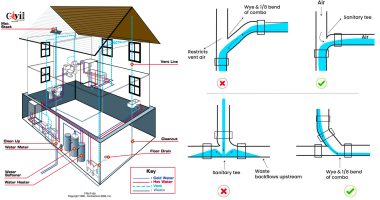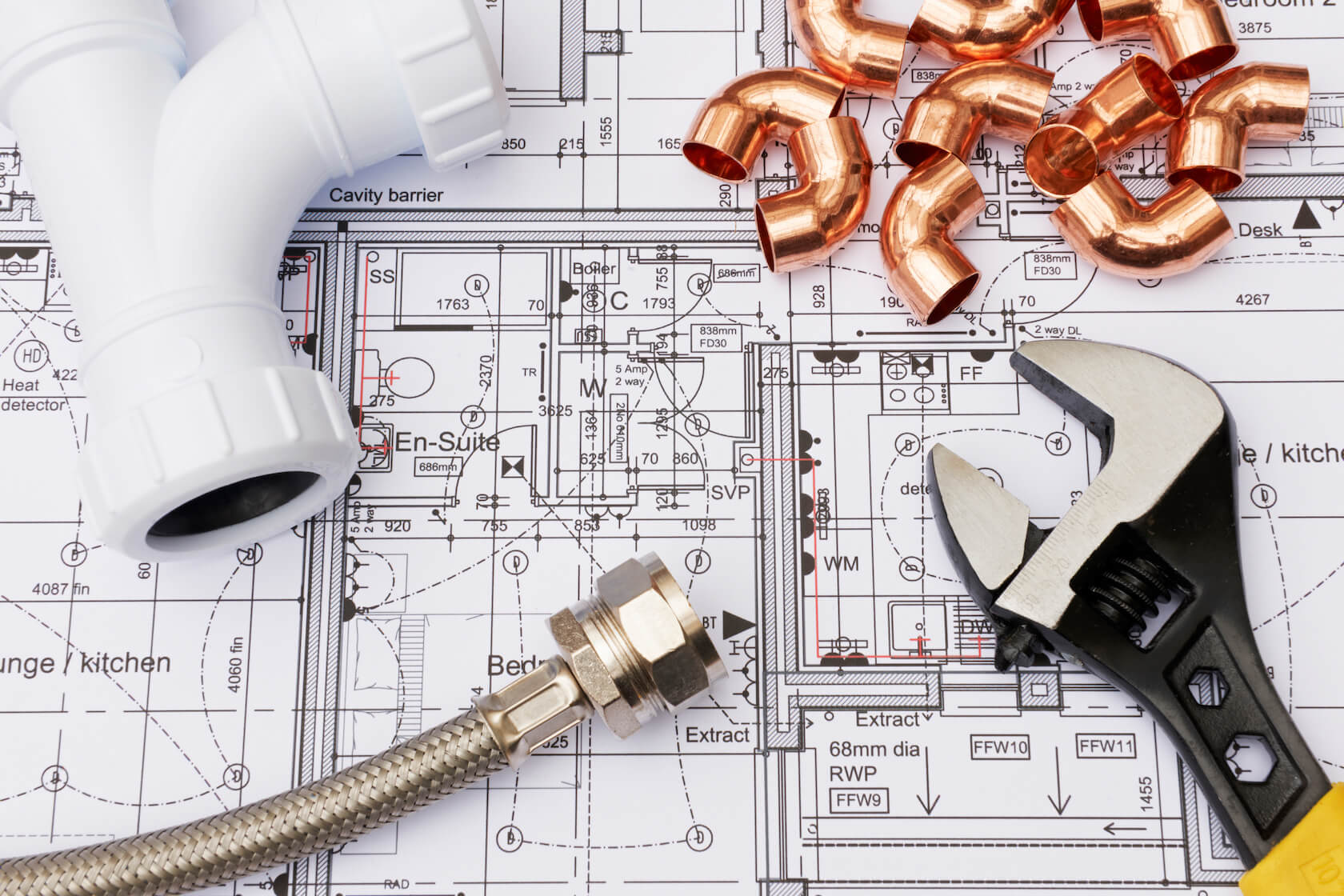What are your thoughts and feelings on Plumbing Installation 101: All You Need to Know?

Comprehending just how your home's plumbing system functions is essential for each homeowner. From providing tidy water for drinking, cooking, and showering to safely removing wastewater, a properly maintained plumbing system is important for your family members's health and convenience. In this thorough guide, we'll check out the complex network that makes up your home's plumbing and offer ideas on upkeep, upgrades, and dealing with typical issues.
Intro
Your home's plumbing system is greater than just a network of pipelines; it's a complicated system that ensures you have access to clean water and efficient wastewater elimination. Understanding its elements and exactly how they work together can assist you prevent costly repair services and make certain everything runs efficiently.
Fundamental Components of a Plumbing System
Pipes and Tubes
At the heart of your plumbing system are the pipelines and tubes that carry water throughout your home. These can be made of different products such as copper, PVC, or PEX, each with its advantages in terms of durability and cost-effectiveness.
Fixtures: Sinks, Toilets, Showers, and so on.
Fixtures like sinks, bathrooms, showers, and tubs are where water is made use of in your house. Recognizing how these components connect to the plumbing system aids in diagnosing troubles and planning upgrades.
Valves and Shut-off Points
Shutoffs control the flow of water in your pipes system. Shut-off valves are important throughout emergency situations or when you need to make repair work, enabling you to isolate parts of the system without disrupting water flow to the entire house.
Supply Of Water System
Main Water Line
The main water line connects your home to the municipal supply of water or an exclusive well. It's where water enters your home and is dispersed to numerous fixtures.
Water Meter and Stress Regulator
The water meter measures your water usage, while a stress regulatory authority ensures that water moves at a secure stress throughout your home's plumbing system, avoiding damage to pipelines and components.
Cold Water vs. Warm water Lines
Comprehending the distinction in between cold water lines, which provide water directly from the major, and warm water lines, which bring heated water from the hot water heater, assists in troubleshooting and preparing for upgrades.
Water drainage System
Drain Pipes and Traps
Drain pipelines bring wastewater away from sinks, showers, and commodes to the drain or septic tank. Catches stop drain gases from entering your home and also catch particles that could create blockages.
Ventilation Pipelines
Air flow pipes permit air into the water drainage system, stopping suction that could reduce drain and cause catches to empty. Correct ventilation is essential for preserving the integrity of your pipes system.
Significance of Correct Drain
Ensuring correct water drainage protects against backups and water damages. Frequently cleaning drains and keeping traps can stop costly fixings and extend the life of your pipes system.
Water Heating System
Kinds Of Water Heaters
Hot water heater can be tankless or typical tank-style. Tankless heating units warmth water on demand, while containers store heated water for prompt usage.
Upgrading Your Pipes System
Reasons for Upgrading
Updating to water-efficient fixtures or replacing old pipelines can boost water quality, reduce water bills, and enhance the value of your home.
Modern Plumbing Technologies and Their Benefits
Discover technologies like wise leakage detectors, water-saving commodes, and energy-efficient hot water heater that can save money and decrease ecological influence.
Cost Considerations and ROI
Determine the ahead of time costs versus long-term financial savings when considering pipes upgrades. Many upgrades spend for themselves through reduced utility expenses and fewer fixings.
How Water Heaters Attach to the Pipes System
Recognizing how water heaters link to both the cold water supply and warm water distribution lines helps in identifying problems like not enough warm water or leakages.
Upkeep Tips for Water Heaters
Frequently purging your hot water heater to eliminate debris, examining the temperature level setups, and inspecting for leaks can extend its lifespan and improve power efficiency.
Common Pipes Concerns
Leakages and Their Reasons
Leakages can happen as a result of maturing pipelines, loose installations, or high water stress. Addressing leaks quickly stops water damages and mold and mildew growth.
Blockages and Obstructions
Obstructions in drains and commodes are commonly triggered by purging non-flushable products or an accumulation of oil and hair. Making use of drainpipe displays and bearing in mind what drops your drains pipes can protect against blockages.
Indicators of Plumbing Problems to Look For
Low tide stress, slow-moving drains pipes, foul odors, or unusually high water bills are indicators of possible pipes issues that ought to be addressed promptly.
Plumbing Upkeep Tips
Routine Assessments and Checks
Arrange annual pipes evaluations to catch issues early. Seek indicators of leakages, rust, or mineral buildup in faucets and showerheads.
Do It Yourself Upkeep Tasks
Basic tasks like cleansing faucet aerators, looking for bathroom leaks making use of color tablets, or shielding subjected pipes in chilly climates can stop major pipes problems.
When to Call a Specialist Plumber
Know when a pipes concern needs specialist proficiency. Trying complicated repair work without appropriate understanding can result in more damages and higher fixing expenses.
Tips for Decreasing Water Usage
Straightforward practices like fixing leakages without delay, taking much shorter showers, and running full lots of laundry and recipes can conserve water and reduced your utility costs.
Eco-Friendly Pipes Options
Take into consideration lasting plumbing products like bamboo for flooring, which is durable and eco-friendly, or recycled glass for countertops.
Emergency situation Readiness
Actions to Take During a Pipes Emergency
Know where your shut-off shutoffs are located and exactly how to switch off the supply of water in case of a ruptured pipe or major leakage.
Importance of Having Emergency Calls Handy
Keep call information for regional plumbers or emergency situation services easily offered for quick feedback during a plumbing dilemma.
Ecological Impact and Conservation
Water-Saving Fixtures and Appliances
Setting up low-flow faucets, showerheads, and commodes can significantly decrease water usage without giving up performance.
DIY Emergency Fixes (When Suitable).
Short-lived repairs like using duct tape to patch a leaking pipe or placing a bucket under a dripping faucet can lessen damages up until a specialist plumber shows up.
Final thought.
Recognizing the makeup of your home's pipes system encourages you to preserve it effectively, saving time and money on repairs. By following regular maintenance routines and remaining educated concerning modern pipes modern technologies, you can guarantee your pipes system runs effectively for many years to come.
Exploring Your Homes Plumbing Anatomy
Water Supply System
Main Water Line: This is where water enters your home from the municipal supply or a private well. Water Meter: Typically located near where the main water line enters the property, it measures the amount of water used. Shutoff Valve: It s crucial to know where this is in case of emergencies. It allows you to turn off the water supply to the entire house. Pipes and Fittings: These distribute water throughout your home. Materials can include copper, PVC, or PEX. Drain-Waste-Vent (DWV) System
Drains: Located in sinks, showers, and tubs, these carry wastewater away. Traps: U-shaped pipes under sinks that hold standing water, blocking sewer gases from entering the home. Vents: Pipes that lead from the DWV system to the outside, preventing vacuum formation and allowing gases to escape. Sewer Line: Carries all wastewater from the home to the municipal sewer system or a septic tank. Fixtures and Appliances
Sinks, Toilets, and Showers Dishwashers and Washing Machines Water Heaters Maintenance Tips
Regularly check for leaks in exposed pipes and around fixtures. Inspect the water heater annually for signs of wear. Clean drains and traps to prevent clogs and odors. Know how to shut off water to individual fixtures. When to Call a Professional
Major leaks or burst pipes Installation of new pipes or fixtures Septic tank issues Remodeling projects that involve plumbing changes Conclusion
Understanding the anatomy of your home's plumbing is key to maintaining a functional and efficient system. Regular checks and knowing when to call in the experts can save you time, money, and stress.
https://www.mavyn.com/blog/exploring-your-homes-plumbing-anatomy

I ran across that blog posting about The Inner Workings of Your Home's Plumbing while surfing the internet. Are you aware of another individual who is occupied with Understanding Your Home's Plumbing Anatomy? Please feel free to share it. We truly appreciate reading our article about Plumbing Installation 101: All You Need to Know.
Schedule Today!